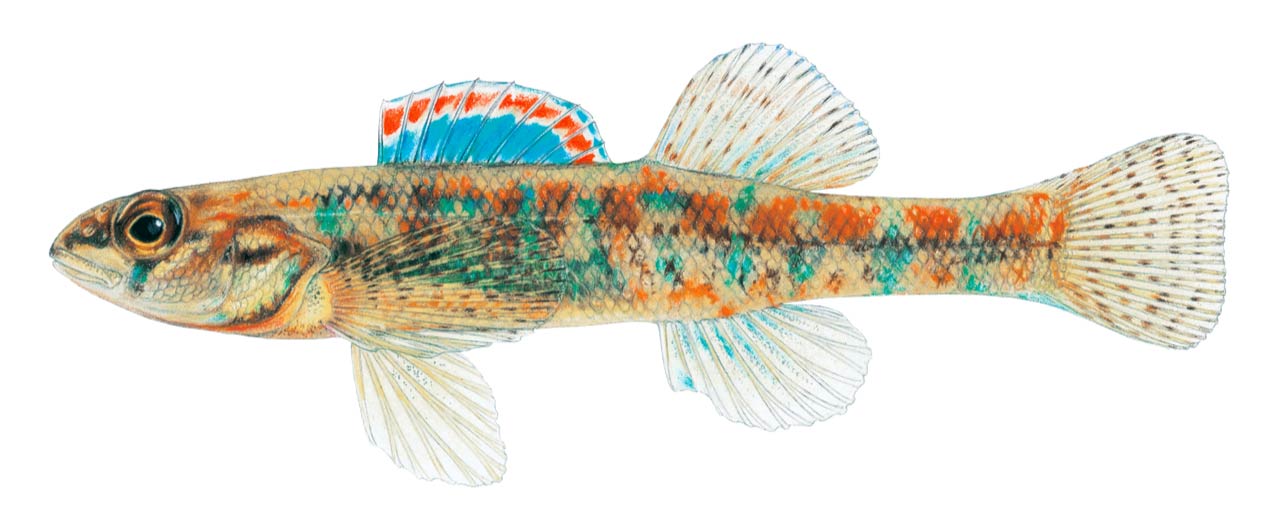Fish Iowa - Fish Species - Iowa darter

Characteristics
A very slender, moderate-sized darter reaching about 2 1/2-inches long. It is bright green with dark brown blotches and small red spots on the sides, belly fading to yellow or gold and white, dorsal fin rays 9 to 11, 7 anal rays, about 60 scales along the lateral line, which is incomplete. The cheeks, opercles and nape are scaled and the breast is naked.
Foods
Midge larvae, mayfly larvae, and amphipods
Expert Tip
- No results found
Details
The Iowa Darter lives in clear, sluggishly vegetated streams and weedy areas of glacial lakes, marshes and ponds. Forest clearing and drainage practices have reduced its habitat and warmed the remaining waters enough to eliminate this species in the southern part of its range. In the United States, it is now common only in non-agricultural areas.
Spawning occurs in sandy areas or beneath stream banks in April and May. During the actual spawning act, the male places its pelvic fins over the dorsal fin of the female and his caudal peduncle wraps around to meet hers. Only a few eggs are laid in each spawning sequence.
Recent stream sampling information is available from Iowa DNR's biological monitoring and assessment program.
Sources:
Harlan, J.R., E.B. Speaker, and J. Mayhew. 1987. Iowa fish and fishing. Iowa Conservation Commission, Des Moines, Iowa. 323pp.
Iowa Department of Natural Resources, Iowa Wildlife Action Plan
Loan-Wilsey, A. K., C. L. Pierce, K. L. Kane, P. D. Brown and R. L. McNeely. 2005. The Iowa Aquatic Gap Analysis Project Final Report. Iowa Cooperative Fish and Wildlife Research Unit, Iowa State University, Ames.
Photo credit: photo courtesy of Joseph Tomelleri, copyright Joseph Tomelleri.
Distribution Map

Most abundant in the natural lakes in Iowa, but can be found in rivers and streams in northern Iowa, as well as the Missouri and Mississippi Rivers.
See our most recent distribution data for this species on the Iowa DNR's Bionet application.
State Record(s)
No state record exists for this species
Submit your potential recordMaster Angler Catches
No Master Angler catches currently exist for this species.
Submit your Master Angler catch